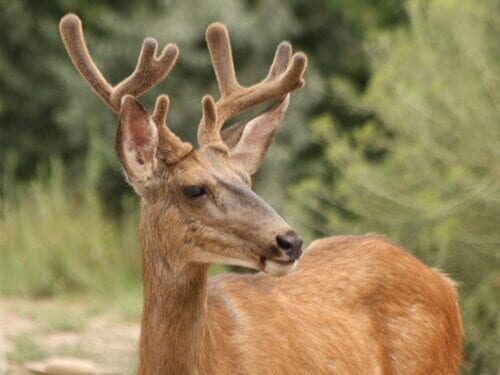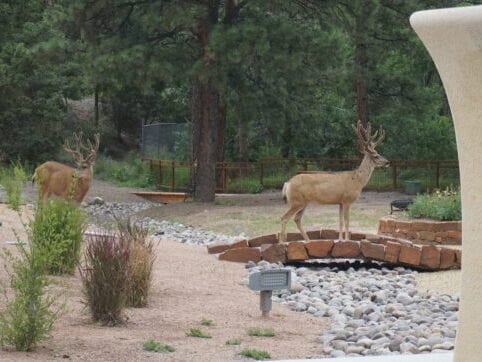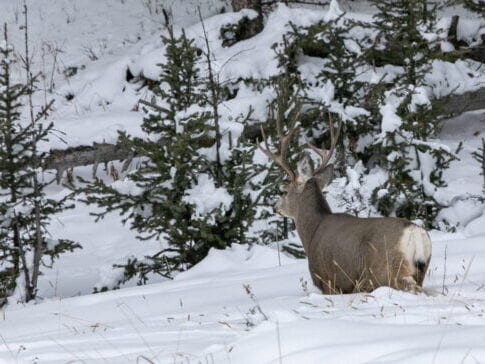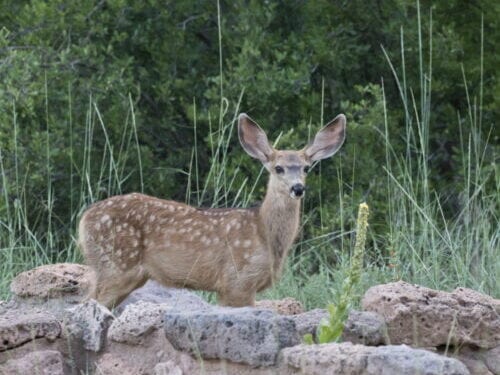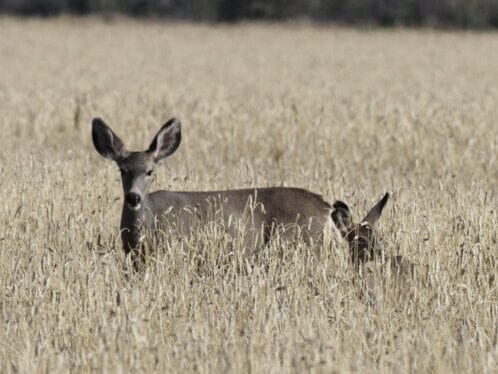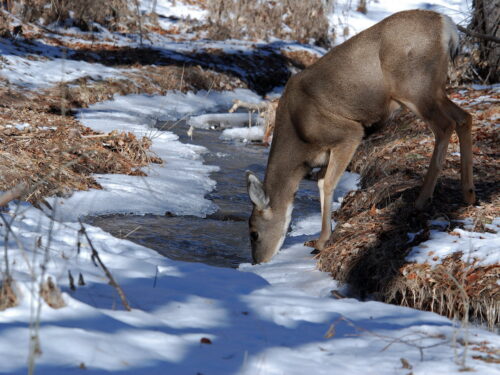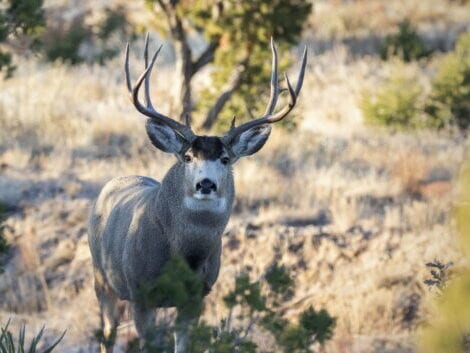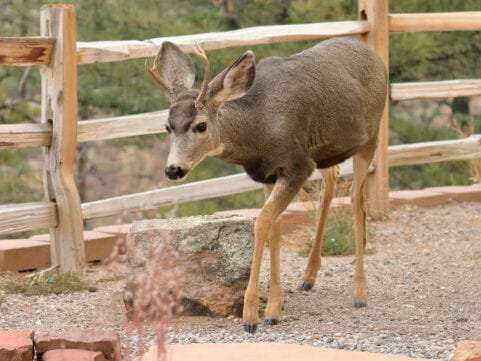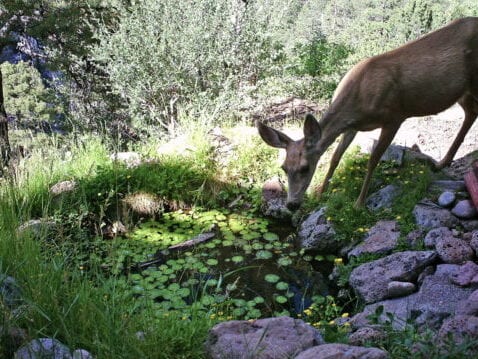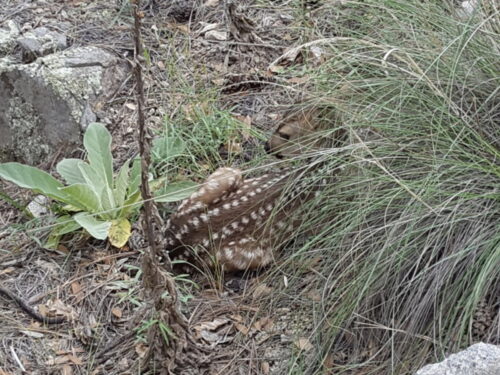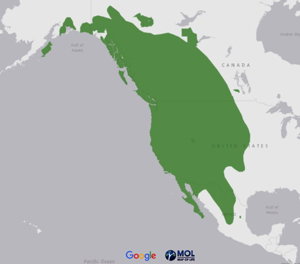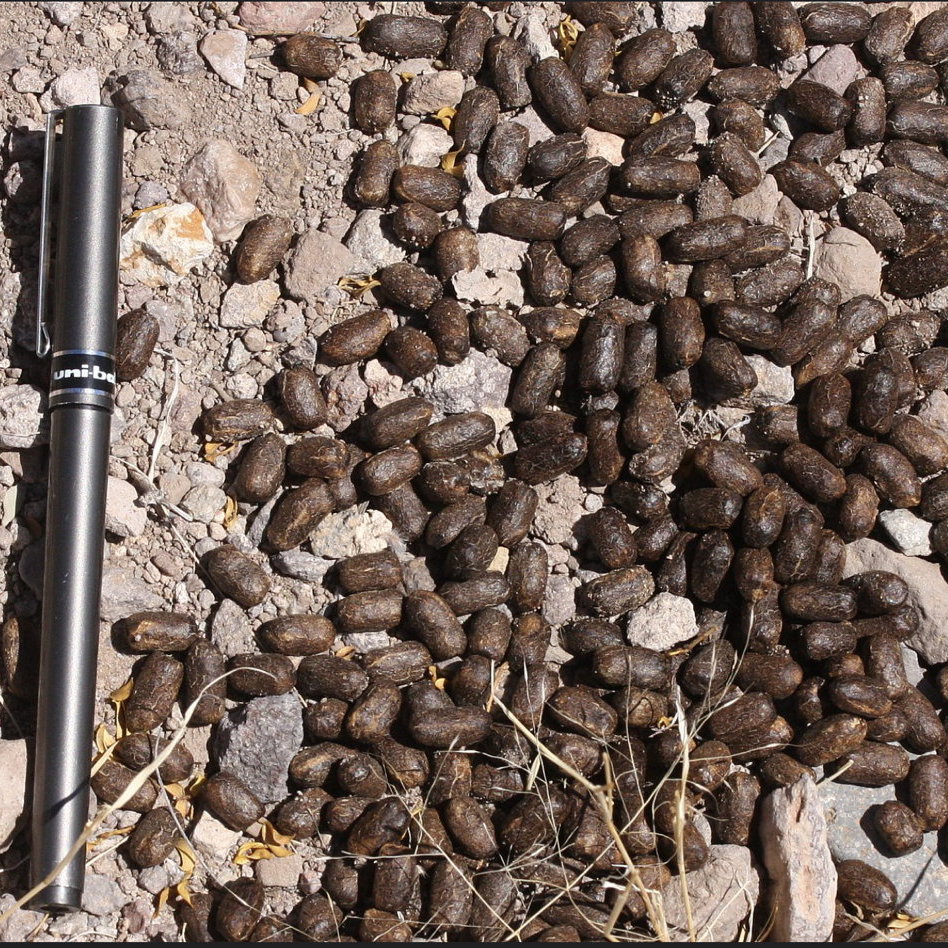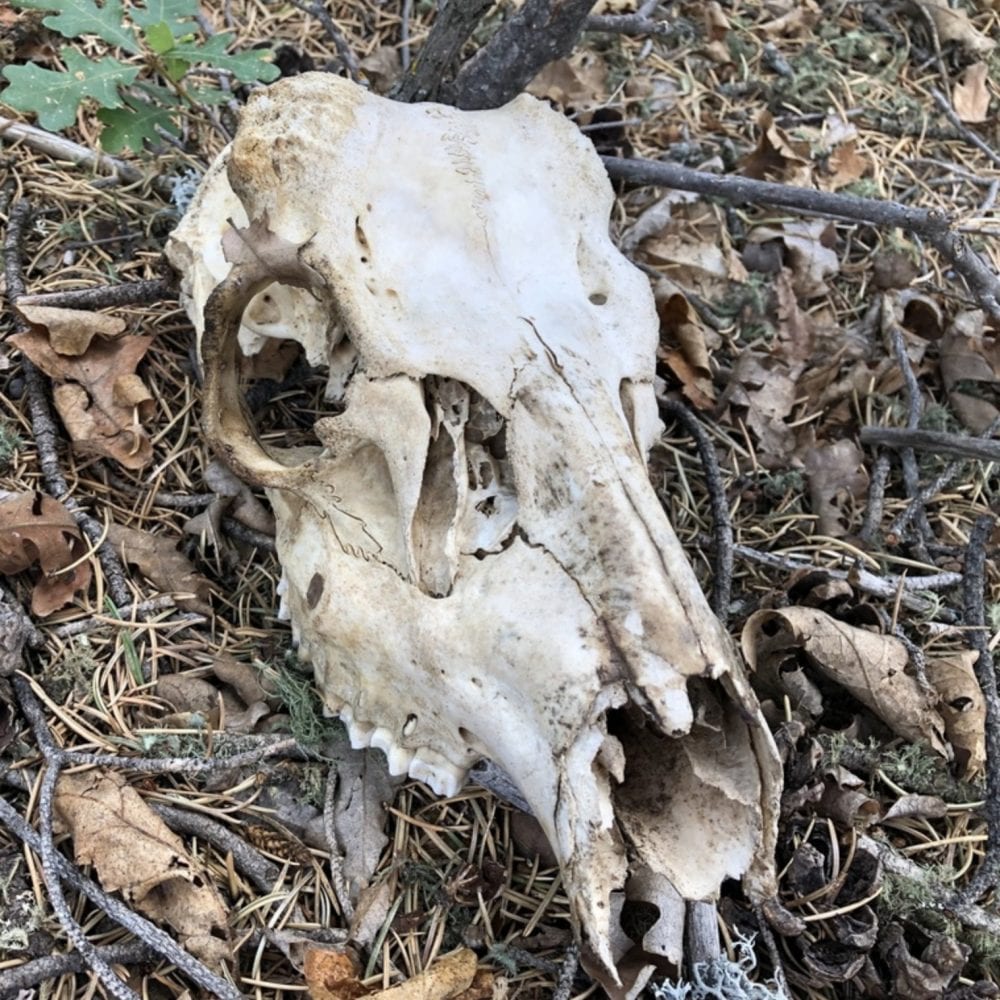Mule Deer
Scientific Name: Odocoileus hemionus
Type: Mammal
Family: Cervidae ( Deer)
Size: About 5 foot long; 3 to 3.5 feet tall at the shoulder
Weight: 130 to 280 pounds
Life Span: 9 to 11 years
Physical Description
Mule deer are stocky ruminants that are about a third larger than their cousins, the whitetailed deer. They are brownish-gray in color and have a black forehead, white rump patch, and a small white tail with a black tip that droops downward.
Their prominent feature is a pair of large mule-like ears that have given them their common name. Bucks (males) have antlers and a larger body than females (does).
Range and Habitat
Mule deer are found in the western part of the United Sates and Canada. They prefer to live in forest edges and mountains but will also inhabit desert regions.
They tend to live at higher elevations during the summer and lower ones during winter.
Diet
Mule deer eat a variety of vegetation. Depending on the season, they feed on shrubbery, grasses, twigs, leaves, mushrooms, nuts, and berries. They will even browse on Douglas fir and Ponderosa pine needles.
Behavior and Social Life
Mule Deer are most active in mornings and evenings but can be seen as well at night. They use grunts and calls to announce their presence in an area. When threatened, they bound away rather than fight.
Only the male mule deer have antlers. Each year the bucks shed their old antlers in late winter and grow a new set. While the antlers are growing back, they are covered in a fine tissue called velvet which supplies blood to the antlers. Once the antlers are fully grown in late summer, the buck will rub against a tree to remove the velvet.
Life Cycle
Fall is the time during which mule deer mate. This time is called the “rut” and is when bucks compete with each other for the attention of the female deer. The largest bucks with the biggest antlers are dominant and will collect several does into a harem.
Does typically give birth to two young in the last spring. Fawns are reddish-brown with white spots over their backs. A fawn will stay with its mother for about a year.
Doe Browsing
Buck Grunting During Rut
Title
Track
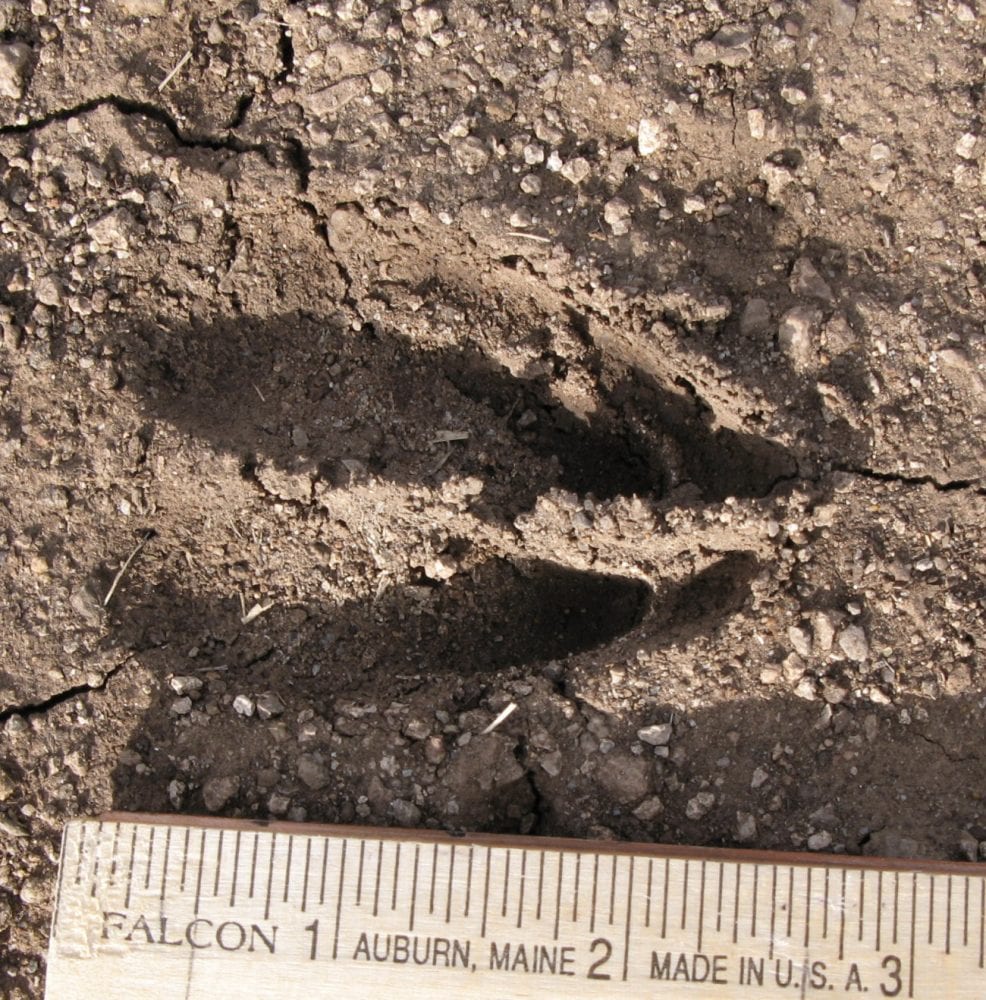
Shred Antler
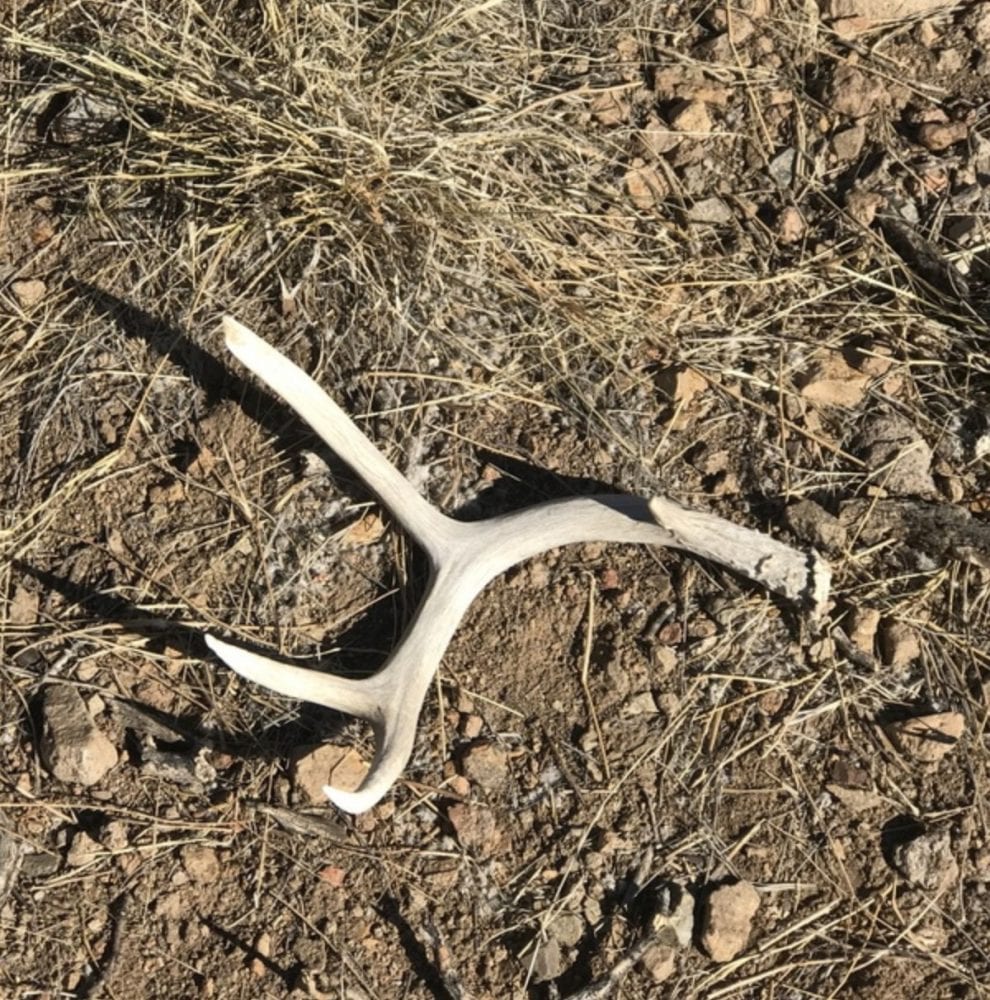
Ecological Role
Mule deer are a keystone species, impacting the lives of plants and other animals. They play a crucial role by providing food for large predators such as mountain lions, bobcats, and coyotes.
Also since they feed on different plant species throughout the year, mule deer increase the biodiversity in the ecosystem and encourage new plant growth. In addition, their abundant feces help plants to thrive.
Interactions With Humans
A large number of mule deer are hunted during the fall for both meat and sport. In addition, many deer are stuck by cars crossing roads. This can result in damage to the cars involved as well as injury to the people in them.
Mule deer will consume crops such as corn, causing significant losses for farmers. However, keeping deer out of fields is extremely difficult.
Interesting Facts
- Mule Deer can move their large ears independently.
- A mule deer can see almost all the way around itself without moving its head.
- They are very sensitive to moving objects, detecting movement as far away as a third of a mile.
- Mule deer have very good night vision.
- Their sense of smell is 1000-times more sensitive than that of a human; it even allows them to detect water that is two feet underground.
- Mule deer have a distinctive bounding leap where all four feet come down together; this is called stotting.
- Mule deer can reach a speed of 45 miles/hour for short periods.
- The antlers on mule deer bucks can grow up to a quarter of an inch per day, have 8 to 10 points, and be as much as 4 feet across.
- Mule deer do not have front upper teeth, only a hard palate.
- Mule deer will sleep most anywhere, making a temporary bed of flattened grass or leaves

